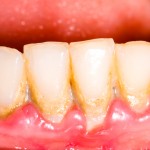
Studies and reviews have suggests a possible benefits with the use of lasers as an adjunct to periodontal treatment. The aim of this review was to evaluate and compare various lasers as monotherapy or adjunctive to surgical periodontal therapy.
Methods
Searches were conducted in the Cochrane Central Register of Controlled Trials (CENTRAL), Cochrane Oral Health Group Trials Register, Medline and Embase databases.
Prospective or retrospective, randomized or not, cohort or case series involving human patients in which outcomes of surgical periodontal therapy using lasers were compared with other surgical approaches were considered
Two independent reviewers screened and selected studies. Study quality was assessed on 6 criteria; sequence generation; allocation concealment method; masking of the examiner; address of incomplete outcome data; free of selective outcome reporting; and patient accounting at the end of the study. The primary outcome was docket depth (PD) reduction, secondary outcomes included, increase clinical attachment level (CAL) gingival recession (GR) and decreased bleeding on probing (BOP). Analysis was in two subgroups: 1) flap surgery with and without laser treatment; and 2) GTR/enamel matrix derivative (EMD) with and without laser treatment.
Results
- 8 RCTs were included
- 103 patients were involved in the flap surgery trials and 78 in the GTR/EMD studies.
- No significant differences were seen between with the flap surgery of GTR/EMD studies with or without laser treatment.
| Flap surgery | GTR/EMD | |
| No of studies | 4 | 4 |
| PD WMD (95%CI) | 0.56 mm (-0.56 to 1.67) | -0.01 mm (-0.51 to 0.49) |
| CAL WMD ( 95%CI) | 1.34 mm (-2.02 to 4.70) | 0.10 mm (= -0.64 to 0.85) |
( WMD – weighted mean difference)
Conclusions
The authors concluded
Within the limits of this study, this systematic review fails to support the effectiveness of dental lasers as an adjunct to resective or regenerative surgical periodontal therapy, owing to the lack of significant superiority over conventional approaches. Precautions must be exercised when interpreting the results of this study because of the small sample size and high heterogeneity among studies. Therefore, more randomised clinical trials examining different laser types and wavelengths are required to obtain stronger conclusions in this regard.
Comments
Only a small number of small studies were available for this review there was also important heterogeneity with 5 different types of lasers being used of differing wavelengths and applications. The authors also highlight that 44.5% of the studies included had a moderate risk of bias mainly related to the masking of examiners and selective outcome reporting. Because of issues with the quality of the available studies the authors recommended interpreting the results with caution and recommending that high quality randomised controlled trials.
Previous reviews have looked at the use of lasers as an adjunct to non-surgical periodontal treatment (Dental Elf – 15th May 2014) and while they have suggested a possible benefit they also suffer in that the available studies are small and of limited quality.
Links
Primary paper
Behdin S, Monje A, Lin GH, Edwards B, Othman A, Wang HL. Effectiveness of Laser Application for Periodontal Surgical Therapy: Systematic Review and Meta-Analysis. J Periodontol. 2015 Dec;86(12):1352-63. doi: 10.1902/jop.2015.150212. Epub 2015 Aug 13. PubMed PMID: 26269936.
Other references

Lasers for surgical periodontal treatment ? https://t.co/bAkaAvLTdQ
Lasers for surgical periodontal treatment – insufficient evidence of effectiveness https://t.co/bAkaAvLTdQ
Lasers as an adjunct to surgical periodontal treatment https://t.co/bAkaAvLTdQ
Insufficient evidence for lasers as an adjunct to surgical periodontal treatment https://t.co/bAkaAvLTdQ
Little evidence for the effectiveness of lasers for surgical periodontal treatment https://t.co/bAkaAvLTdQ
Don’t miss- Lasers for surgical periodontal treatment – insufficient evidence of effectiveness https://t.co/bAkaAvLTdQ
[…] Dental Elf – 22nd Mar 2016 – Lasers for surgical periodontal treatment – insufficient evid… […]